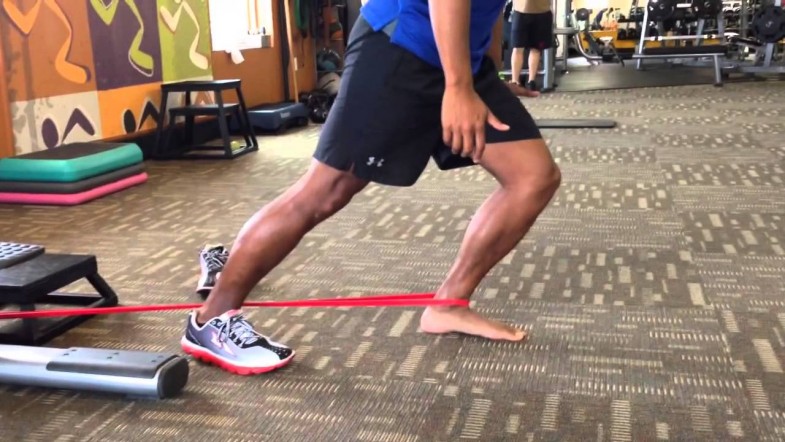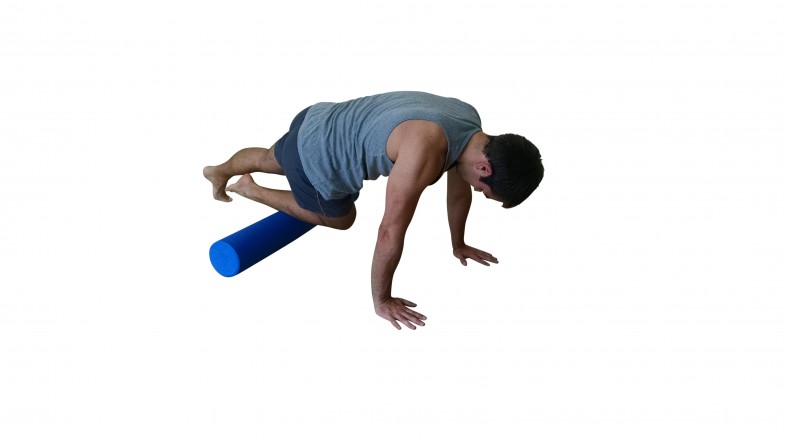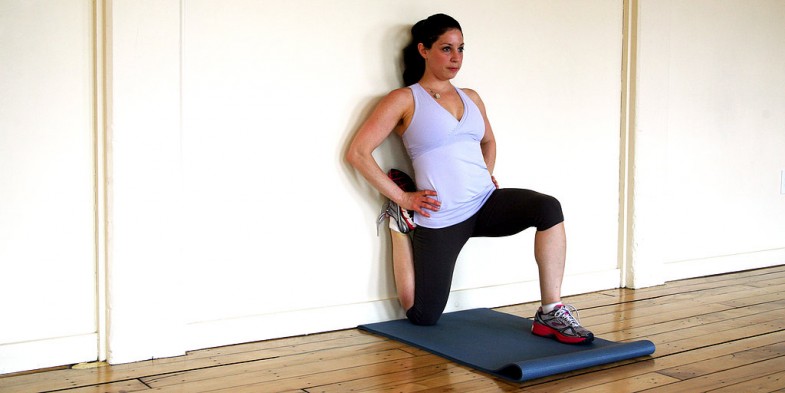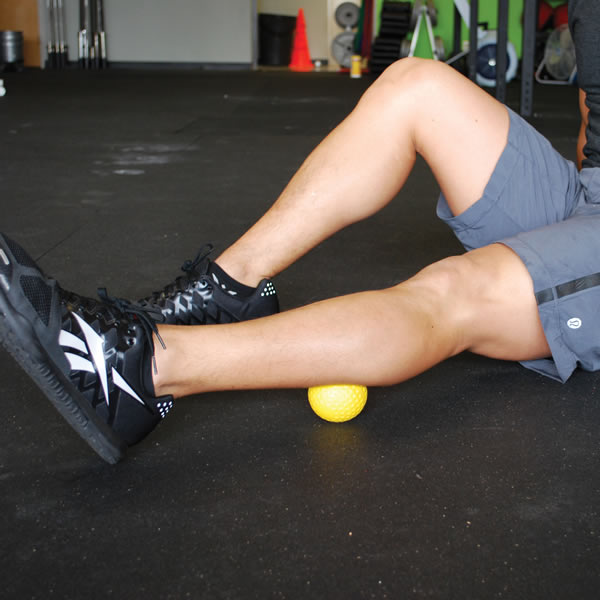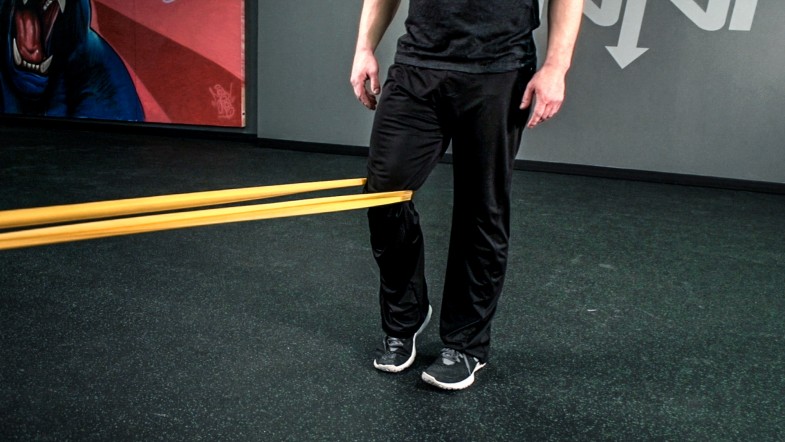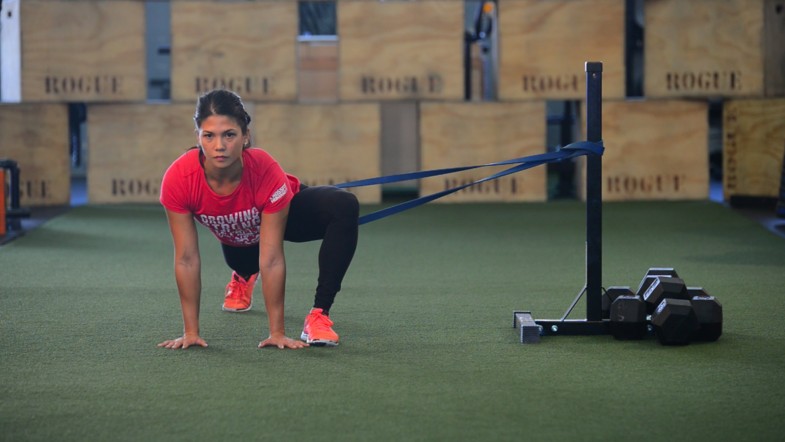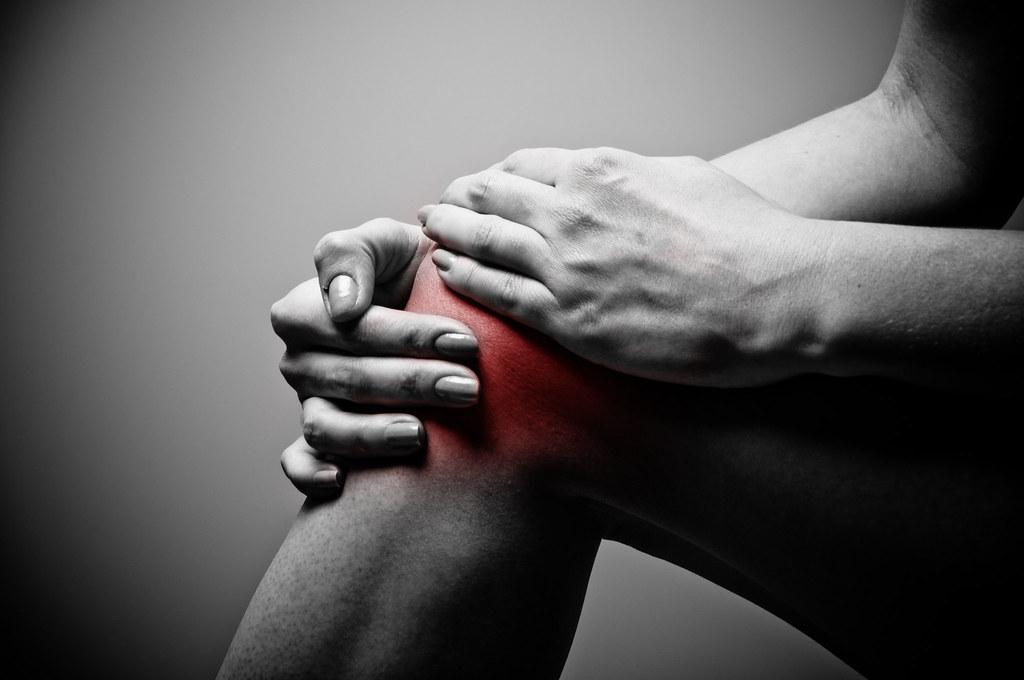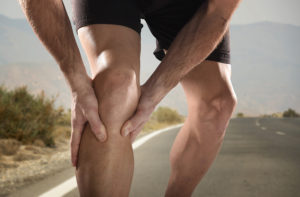
If you suffer from knees that feel like they have been bludgeoned with a scalding hot tire iron, you are not alone. One study from Gallup-Healthways found that 26% of the adult population in the US suffers from knee pain.
1) ANKLE BAND DISTRACTIONS
One of the main functions of the ankle is to hinge, enabling the knee and hip to synergistically work together in creating movement. Stiff, rigid ankles are common, which can lead to injury and discomfort. Band distractions serve to “floss” stubborn joints. They can enhance range of motion, get nutrients into cartilage and alleviate pain.
How To Do It:
Loop one end of a band around a sturdy base and the other around your ankle. Drop into staggered stance, with the banded leg in front of the non banded leg. Inch out until you feel tension and then drive the knee forward as far as you comfortably can. Keep the banded foot firmly on the ground (not up on your tippy toes) Feel free to rotate the ankle side to side as you drive the knee back and forth. Repeat on both sides for 45 seconds each.
2) ROLL OUT YOUR SHINS
Foam rolling is a tremendous tool for soft tissue work. Fitness enthusiasts use it for their hips, lower back and other trouble zones that can get irritated with frequent use. But there is an area that I rarely see being attacked in my day to day gym-goings- The shins. Perhaps it’s because it’s a tougher group to really hit, or just an oversight because it typically doesn’t feel horrendous. But don’t simply blindly chase pain. Even if that area doesn’t hurt, it could be a big factor contributing to knee issues. In my experience (not 100% mind you) people who suffer from some degree of anterior knee pain feel a great deal of discomfort while trying this movement.
How To Do It
Get into a pushup position with a roller at the base of your ankles. Turn your toe in towards the midline of your body in order to expose the muscles of the shin and address them. Press your shins firmly down on the roller and gradually inch up towards your knee. You completely control the pressure in this movement. For more intensity really lay your body weight into the foam, for less ease back on the throttle. I like trying to move my foot up and down during the rolling and search for hot spots. 45 seconds to a minute on each leg should suffice and free up those important lower leg muscles.
3) WALL QUAD STRETCH
The wall based quad stretch is a tremendous bang for your buck move that can be done just about anywhere. Got a wall? Good you can do this exercise. The beauty in this stretch is that it hits the front of the foot, ankles, shins, quads and knees.
How To Do It
Get up against the wall (facing away from the wall) in the bottom of a lunge position. Flip your back foot up against the wall with your toes on the actual surface of the wall. Your back knee is the axis point and really determines how much of a stretch you will get during this exercise. The closer the back knee is to the wall the more of a stretch there will be through the foot, ankle and quads. If you are looking to get a little adventurous and want to stretch the hip flexors out, focus on pushing the hips forward.
4) HAMSTRING FLOSSING
The muscles in the hamstring group (semitendinous, bicep femoris and semi membranosus) all cross the knee joint. Issues in any of these muscles can cause knee pain in the posterior (rear) portion of the knee and leg.
How To Do It
Get a hold of a tennis or lacrosse ball and a sturdy box or ledge of about mid thigh height. Sit on the box and place the ball underneath the leg, firmly on the hamstrings. Extend and bend the knee while applying pressure to the muscle. Let the ball go up and down the back of the leg while you continue flexing and straightening the leg. One minute on each leg should have your hamstrings and knees feeling like gold.
5) BAND TKE
A classic rehab exercise, the Terminal Knee Extension serves as a great low impact quad activator. It can get blood flowing to the knee and quad to prepare your lower body for training.
How To Do It
Take an exercise band and loop it around a sturdy base. Step into the band with one leg and place it just above the top of the knee. Walk out and get some tension in the band. From there bend and extend the knee, really focusing on straightening the knee completely and contracting the quad as hard as you can. Perform for 25 reps on each side and get ready to feel a ton of blood rush to that area.
6) TFL DISTRACTION
The TFL (Tensor Fasciae Latae) is a small muscle located at the side of your hip just below the crest of your pelvis. When tight and bound up this nasty little bugger can affect the knee by pulling through the IT band and causing pain on the outside of the knee.
How To Do It
Again, we will make use of the versatile exercise band. Loop one end to a stationary object and loop the other end right underneath your butt. Get into a kneeling position with the banded leg in the back and the other leg in front of you (envision a kneeling lunge). Keep your torso tall and turn the banded leg out (internally rotating the hip). When you rotate the leg out you are really able to appropriately address the TFL as it’s a difficult area to stretch. Squeeze the glute on the banded leg side to really stretch the heck out of the TFL.
Knee pain is no laughing matter and can rob the fun out of rewarding physical activities. Getting a thorough examination from a doctor or physical therapist is always recommended. But, if time or financial issues are a consideration then hopefully these exercises and stretches can serve as a way to alleviate some of the pain and get you squatting and lunging like a pro.
Source: muscleandfitness.com
